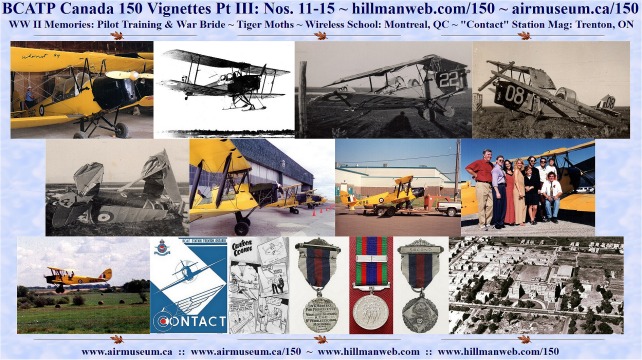013/150
Station Magazines ~ "Contact" Trenton ~ July 1942
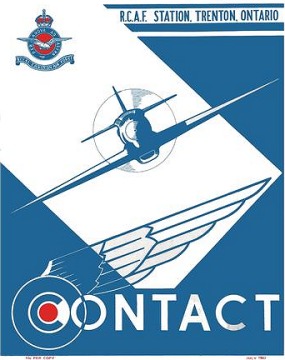
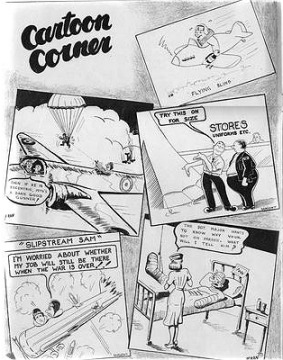
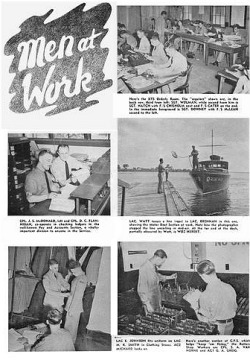
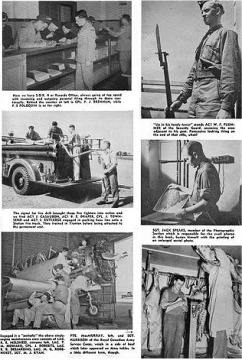
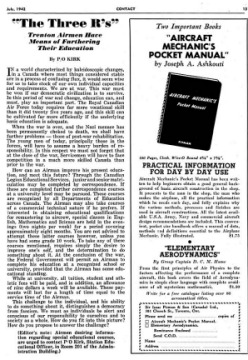
Read seven complete reprints of Trenton's CONTACT
from 1942 at the
Commonwealth Air Training Plan Museum's
STATION MAGAZINE SECTION
www.airmuseum.ca/reprints/trenton42
0014
of 150
No. 1 Wireless School – Montreal Quebec
 No.
1 Wireless School, Montreal Quebec opened on February 16 1940 for 1672
days, closing on September 14 1944. In the initial negotiations for the
creation of the British Commonwealth Air Training Plan, only one wireless
training school was called for with an objective of training 870 wireless
operator/air gunners every four weeks or near 29,000 per year.
No.
1 Wireless School, Montreal Quebec opened on February 16 1940 for 1672
days, closing on September 14 1944. In the initial negotiations for the
creation of the British Commonwealth Air Training Plan, only one wireless
training school was called for with an objective of training 870 wireless
operator/air gunners every four weeks or near 29,000 per year.
This eventually changed and four schools were created
– No. 1 in Montreal, No. 2 in Calgary, No. 3 in Winnipeg and No. 4
in Guelph. On September 14 1944, No.1 Wireless School moved to Mount
Hope Ontario which was open until October 31 1945 after operating for 412
days.
When the schools opened, in order to qualify as a wireless
operator/air gunner, the airman was required to complete 24 weeks of training
at a wireless school followed by four weeks of bombing and gunnery training.
On transfer to operational training, pilots and wireless air gunners received
an additional 12 weeks of training. Here, a pilot, an observer and two
wireless operator/air gunners were put together as a crew to complete the
operational training. If the crew demonstrated they were capable of making
a trans-Atlantic crossing, they were given another eight weeks of training
and were then transferred to Ferry Command.
The schools utilized Fairey Battle and Bolingbroke aircraft
for gunnery practice, Westland Lysanders for target towing and Avro Ansons
for bombing practice.
As the war progressed, training changed to meet the needs
of aircrew flying bombing missions. The overworked Air Observer found relief
with the addition of the Air Bomber to the crew. The Observer was responsible
for navigation and the Air Bomber concentrated on finding and hitting bomb
objectives.
In June 1942, Air Observer training was phased out in
favour of the training of specialized Navigators, In November, Navigators
began to be classified as Navigator Bombers with a "B" on their wings badge
and Navigator/Wireless with a "W" on their wings. Navigator Ws were required
to complete 28 weeks at wireless school and 22 weeks at an air observer
school. Upon completion of training, these navigators were assigned to
fast two-engine, two aircrew aircraft like the de Havilland Mosquito. Navigator
Bs spent eight weeks at Bombing and Gunnery school and 12 weeks training
as a Navigator at an Air Observer School and were generally assigned
to heavy bombers such as the Avro Lancaster.
Our research turned up the attached Toronto Globe and
Mail newspaper article, dated January 28 1940, in the Canadian War Museum
Archives. It discusses the creation of No. 1 Wireless School in Montreal.
The school was to be located on land and in buildings owned by the Grey
Nuns and Nazareth School for the Blind on Queen Mary Road. The purpose
of the school was to train wireless radio operators, signal operators and
radio mechanics. The existing buildings which housed 900 students were
modified to suit the needs of No. 1 Wireless School and additional living
quarters were constructed. An air photograph of the school (above) appears
to show two-story H-Hut buildings behind the school. Other renovations
included changes to teaching spaces and mess and recreation areas within
the building.
Our research also turned up interesting information not
part of the official RCAF story of No. 1 Wireless School. The Canadian
War Museum yielded a photograph of a medal for proficiency awarded to the
best of the best students. We have yet to see any other BCATP school offer
such a tangible, yet unofficial award to students. A November 4 1943 Winnipeg
Tribune newspaper article sheds some light on the award. It offers the
following information: "Muriel Cove Heads Graduating Class -- Heading the
graduating class at No. 1 Wireless School, Montreal, Muriel Cove, daughter
of Mr. and Mrs. E. H. Cove, 969 Banning Street was winner of a medal for
proficiency. Second place was won by Hazel Harris, also of Winnipeg. She
was formerly an employee of the Winnipeg Public Library."
Obviously, it was not a medal sanctioned by the crown
authority managing military honours but something created locally at the
school to encourage students to work harder. The medal was "minted
by Birks" and in this case, the recipient was a D.W.G. Hassell. The attached
ribbon shows a bar with the word "Second" on it. He, or should I say this
person, like Hazel Harris, took runner-up honours. The other side of the
medal has on it the RCAF crest and the RCAF wireless insignia. This medal
is a reminder that members of the RCAF Women’s Division were also required
to obtain specialized training at various schools. During World War II,
a great number of women became Wireless Operators.
Upon completion of training the WD Wireless Operations
become ground based radio operators for aircrew flying both non-combat
and combat missions. These WDs also were trainers in the BCATP passing
on their knowledge to fledgling wireless operators. Author Elinor Florence
offers a wonderful recollection of another woman who went to No. 1 Wireless
School. She is Merle Taylor and her story can be seen at:
http://elinorflorence.com/blog/merle-taylor-morse-code
Five photographs and a hilarious story on a short audio
clip from RCAF student Alonzo Blackmore are available at the Memory Project
web site at:
www.thememoryproject.com/stories/450:alonzo-blackmore
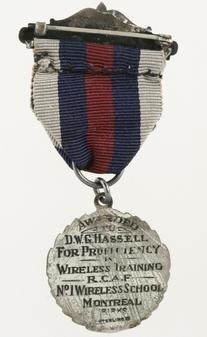
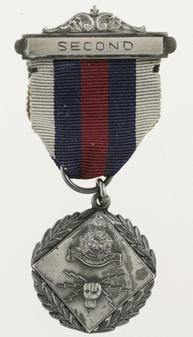
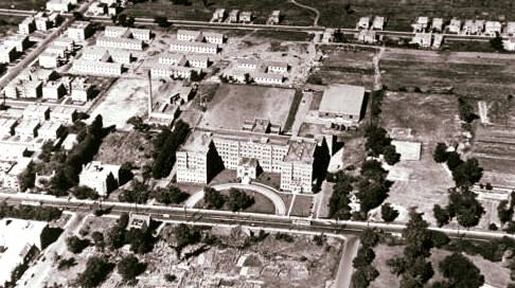
015/150
A World War II Memory – A War Bride by Doreen Balkwill
(nee Stone)
This remembrance was submitted by Doreen Balkwill
of Brandon Manitoba to the CATP Museum in December 2000 as part of our
Oral History Project. She is the wife of Edward George Balkwill, a veteran
of the Royal Canadian Air Force in World War II. Doreen passed away on
September 25 2008 at the age of 92 years.
I am a Brandon (Manitoba) born war bride. I met Edward
George Balkwill at a Brandon Armouries Service Dance. George enlisted in
the Royal Canadian Air Force in Regina Saskatchewan and was housed in the
old 'C' Barracks (Security Building) in Brandon Manitoba before the Manning
Pool (No. 2 Manning Depot) opened in Brandon. After training here, he went
to (RCAF Station) Jericho Beach Vancouver and No. 1 Wireless School in
Montreal. He came to Rivers (No. 1 Air Navigation School) where he was
crew of the "Flying WAGs (Wireless Air Gunners)." Shadow was his nickname.
We married while at Rivers. The RCAF insisted that
an airman obtained permission to marry and the bride submitted three recommendations
confirming her suitability as an airman’s wife. The wedding was posted
on the board. Our wedding date was July 12 1941 on a 48 hour pass.
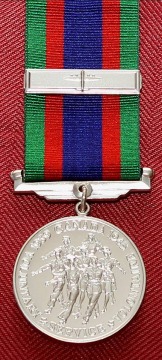 The
Canadian Volunteer Service Medal (CVSM) with Bomber Command Bar was awarded
to any Canadian veteran who served with Bomber Command during World War
II. All Canadian members of the 6th Bomber Group received this medal and
bar.
The
Canadian Volunteer Service Medal (CVSM) with Bomber Command Bar was awarded
to any Canadian veteran who served with Bomber Command during World War
II. All Canadian members of the 6th Bomber Group received this medal and
bar.
George went on to more training at Yorkton Saskatchewan
and McDonald Manitoba. He was deployed overseas with the 6th Bomber Group.
Our little girl was one month and 15 days when he left. I had two younger
brothers serving overseas in the army and also three brothers-in-law overseas
in the air force. Two sisters were in war related work. The family kept
my parents and me busy helping keep in touch with letters and parcels.
We saved all candy bars, gum etc. to send to the boys.
We tried not to worry but the tension was always there.
We learned of a friend’s son’s death and my youngest brother was severely
wounded and flown back from Germany to England. It was devastating. We
were fortunate all our boys came home. George went over on the ``Queen
Lizzie’’ packed like sardines. He came back earlier after the war in Europe
ended on the Strathenden as he volunteered to go to Japan. Our mail was
censored and quite often had parts cut out. Often you wouldn’t hear for
weeks and then you got a lot of mail at once. I belonged to the Service
Club ``Contact’’ and enjoyed it but my husband was overseas and all the
other husbands were posted to local army camps in Shilo and Brandon – so
I had little to relate. I stayed with my parents with baby ``Joan.’’ My
mother knit many pairs of socks and sweaters for our ``lads’’ overseas.
Coming back to Brandon, we built our home in 1946 – in which I still live
and raised our family of two boys and three girls.
After the war, George worked for a short while for
the DVA (Department of Veteran’s Affairs) Hospital as an electrician then
for Brandon Post Office until retirement. We belonged to the 502 Wing of
the Royal Canadian Air Force Association and the Legion, both in Brandon.
George was a Founding Member of the (CATP) air museum of which he was so
proud.
George passed away on March 10 1994 at age 83.
So I feel we had a little part, on both sides of our
families - the Balkwills and the Stones - in the war effort to keep our
country free.
George and Doreen Balkwill were lifelong friends
of my parents Paul and Beth Sigurdson. My father was a veteran of the WWII
Canadian Army and spent time overseas as well. He too was hired by the
DVA Hospital - as a carpenter. This is where the friendship began. Both
George and Paul moved on to jobs with Canada Post where they worked until
retirement. After the war, Canada’s Crown Assets sold off much of the infrastructure
built to train our forces. In Brandon, the army had a training camp which
housed trainees in dozens of H-Huts located in the south end of town. George
and Paul, each bought a quarter of an H-Hut, moved it on to lots in the
city and renovated them into wonderful comfortable houses – with used nails
and gyprock also purchased from Crown Assets. One of my favourite memories
of George is being at Ditch Lake where both families had cabins. We had
an old multi-band radio which was capable of picking up the telegraph traffic
between Dauphin and Brandon. When asked, George, because of his wireless
training which had not been used for nearly 20 years, gleefully was able
to decipher the Morse messages as they were sent. He did admit however
that the speed of these messages was faster than what he was used to in
the RCAF. Although he didn’t understand 100% of the content of the messages,
he was able to understand good portions of them.
Our parents were happy and determined to make a
good life – I believe their success at this was a result of the motivation
they were given by the hard times they faced in the Great Depression and
World War II.
~Greg Sigurdson
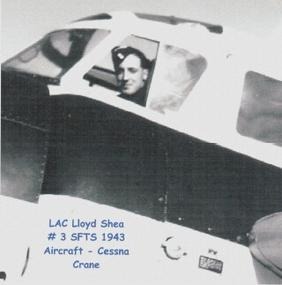 I
joined the Royal Canadian Air Force at the age of 19 in the fall of 1942
in Calgary and was given Service number R******. I went to #3 Manning Depot
in Edmonton in early 1943. This was at the very height of the Plan and
after about six weeks of indoctrination and learning to march, we were
sent to Vancouver for three months to what we called WETP (actually it
was Wartime Emergency Training Plan). It was spring in Vancouver and a
pleasant change from the prairie winter. We boarded in private homes and
attended classes five days a week at Seaview School in the Kitsilano area.
We took mostly refresher High School subjects with a few Air Force courses
thrown in. It was actually just a way to keep us occupied because
the flying schools were plugged. Previous to this, aircrew trainees
had done guard or tarmac duty while they waited to start training.
I
joined the Royal Canadian Air Force at the age of 19 in the fall of 1942
in Calgary and was given Service number R******. I went to #3 Manning Depot
in Edmonton in early 1943. This was at the very height of the Plan and
after about six weeks of indoctrination and learning to march, we were
sent to Vancouver for three months to what we called WETP (actually it
was Wartime Emergency Training Plan). It was spring in Vancouver and a
pleasant change from the prairie winter. We boarded in private homes and
attended classes five days a week at Seaview School in the Kitsilano area.
We took mostly refresher High School subjects with a few Air Force courses
thrown in. It was actually just a way to keep us occupied because
the flying schools were plugged. Previous to this, aircrew trainees
had done guard or tarmac duty while they waited to start training.
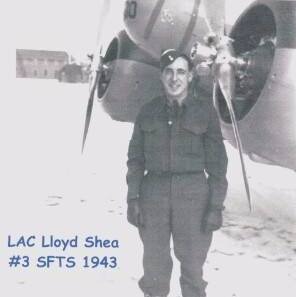 Our
days consisted of half day flying and half day in ground school with Sunday
the only day off. In summer when the days were long and we were flying
in the morning, we were called at 5:30 and after breakfast went straight
to the hangars where we flew or sat around until 11:00. We had lunch and
went to ground school until 6:00 and after supper were often on Duty Watch
to lower the flag, do homework, go to the wet canteen or simply lay around
the billet talking flying until lights out shortly after 10:00. The following
morning we were awakened at 6:30 and after breakfast had an hour of Physical
Training and were in class from 9:00 to 12:00. After lunch we reported
to the hangar where we stayed, often flying until near dark or helping
to push the planes into the hangar. The students weren't the only ones
who worked hard. My instructor, a P/0 Roe, had six students and until
we went solo, which took me about nine hours, he flew at least five instructional
trips each day. I graduated with a little over 70 hours including three
hours night and 10 hours of instrument flying. In addition I was given
11 hours of instrument instruction in the Link Trainer.
Our
days consisted of half day flying and half day in ground school with Sunday
the only day off. In summer when the days were long and we were flying
in the morning, we were called at 5:30 and after breakfast went straight
to the hangars where we flew or sat around until 11:00. We had lunch and
went to ground school until 6:00 and after supper were often on Duty Watch
to lower the flag, do homework, go to the wet canteen or simply lay around
the billet talking flying until lights out shortly after 10:00. The following
morning we were awakened at 6:30 and after breakfast had an hour of Physical
Training and were in class from 9:00 to 12:00. After lunch we reported
to the hangar where we stayed, often flying until near dark or helping
to push the planes into the hangar. The students weren't the only ones
who worked hard. My instructor, a P/0 Roe, had six students and until
we went solo, which took me about nine hours, he flew at least five instructional
trips each day. I graduated with a little over 70 hours including three
hours night and 10 hours of instrument flying. In addition I was given
11 hours of instrument instruction in the Link Trainer.
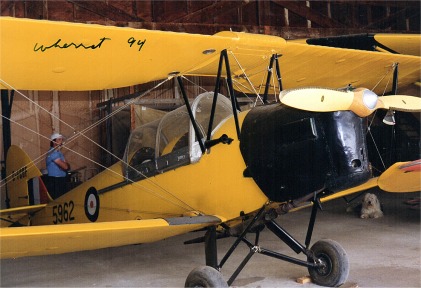
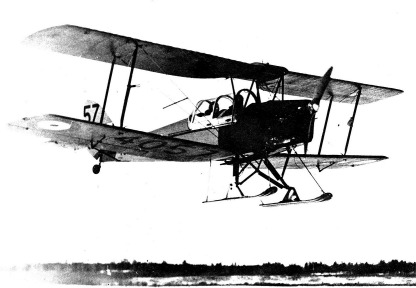
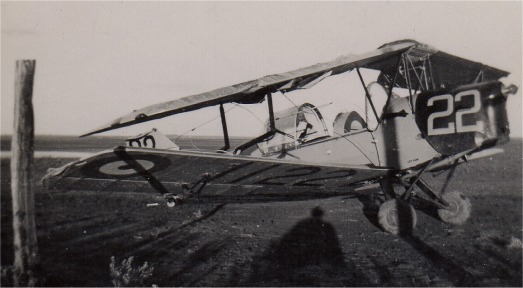
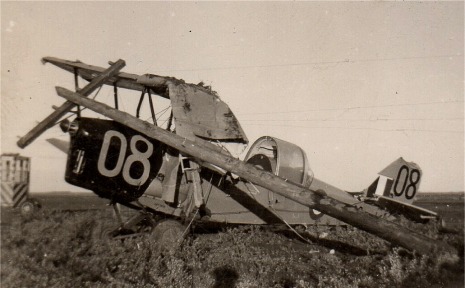
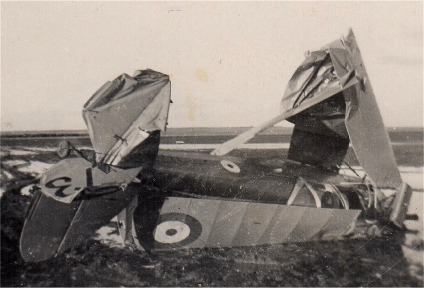
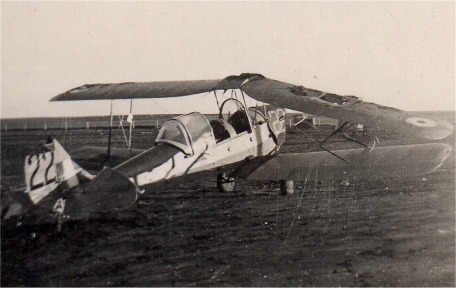
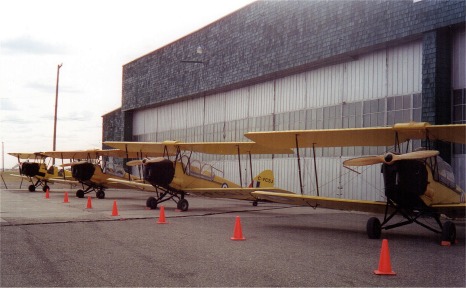
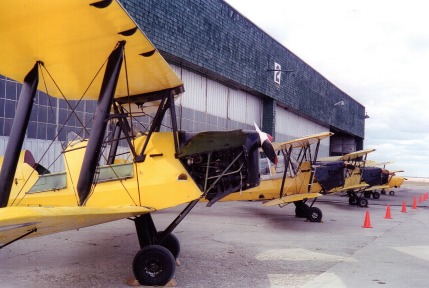
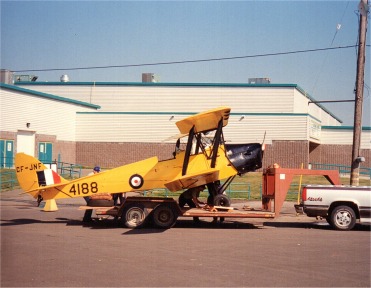
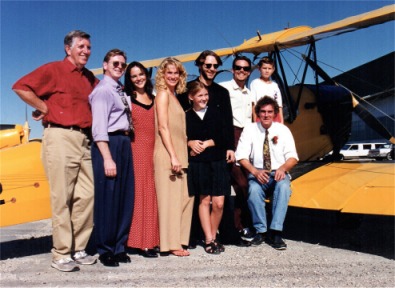
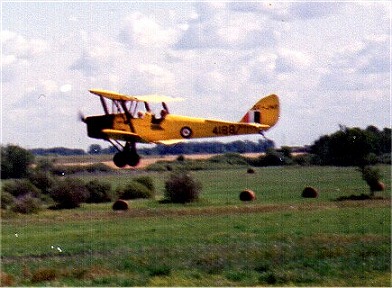





 No.
1 Wireless School, Montreal Quebec opened on February 16 1940 for 1672
days, closing on September 14 1944. In the initial negotiations for the
creation of the British Commonwealth Air Training Plan, only one wireless
training school was called for with an objective of training 870 wireless
operator/air gunners every four weeks or near 29,000 per year.
No.
1 Wireless School, Montreal Quebec opened on February 16 1940 for 1672
days, closing on September 14 1944. In the initial negotiations for the
creation of the British Commonwealth Air Training Plan, only one wireless
training school was called for with an objective of training 870 wireless
operator/air gunners every four weeks or near 29,000 per year.




